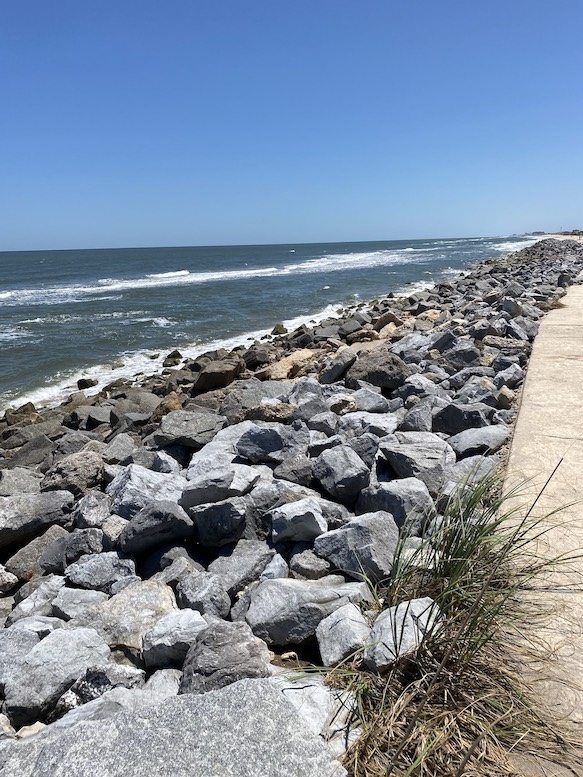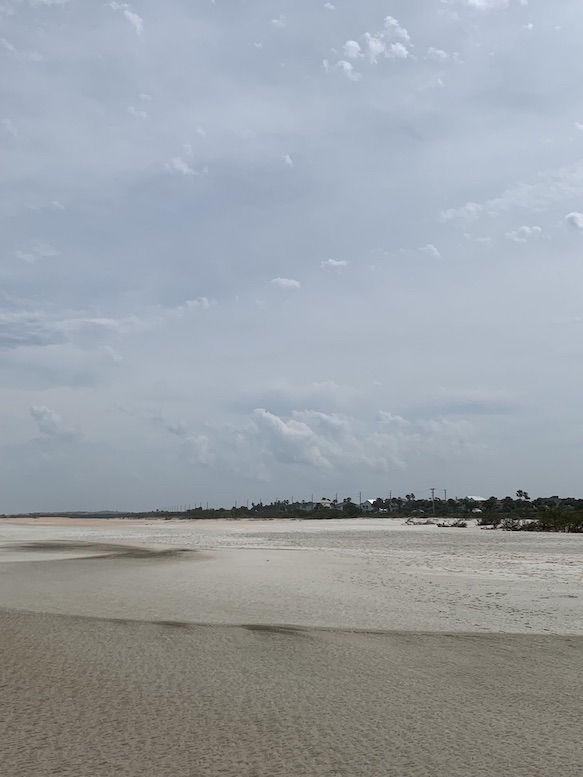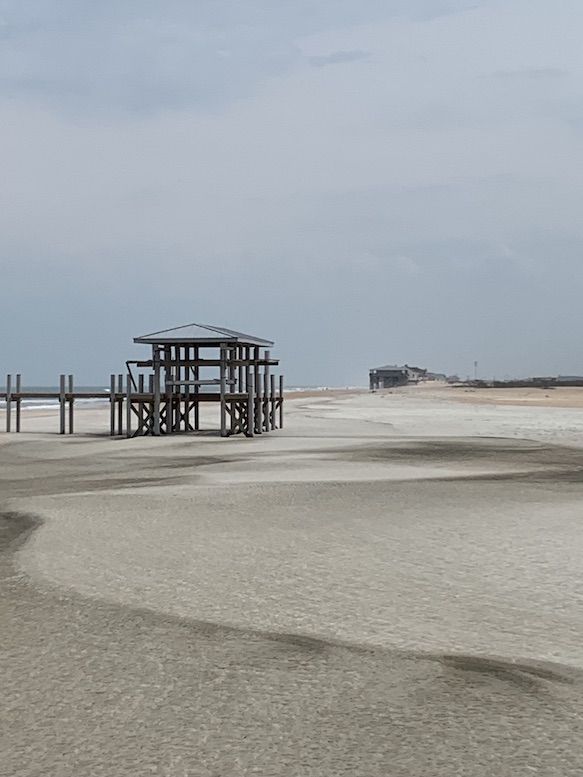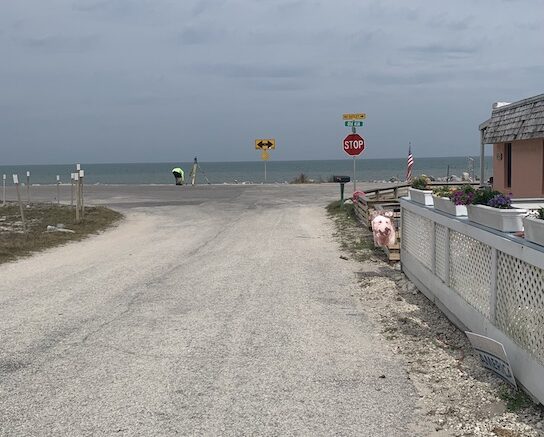
By Megan Churchill
When Skye Taylor moved to the beach at Summer Haven 20 years ago, there was 40 feet of sand visible at low tide. Today – partly due to last year’s storms – she said there is often barely enough beach to walk on.
The rock seawall which runs just behind Taylor’s house, protects her house relatively well from hurricanes and nor’easters, but the wall is slowly degrading.
“The ocean brings up rocks, big rocks, so pieces of that wall are being rearranged, it’s being degraded so that it’s not the protection that it was when it was built 70 years ago. You know, each year it gets a little worse,” said Taylor.
The impact of hurricanes and nor’easters doesn’t just affect the houses directly along the ocean. According to a St. Johns County Emergency Management article, Hurricane Nicole alone caused $33 million worth of damage in St. Johns County. Both Ian and Nicole washed out roads and left houses along the beach without power for months. They eroded the sand dunes along the beach which lead to loss of habitat for sea turtles in addition to loss of protection from storm surge. There are continuing dune restoration projects planned for the coming year.
Taylor said when the county invests in projects to restore seawalls or sand dunes that the perception of the need for these projects is sometimes off.
“The impression is that every time they spend money down here, they’re saving rich people’s houses,” she said, but in reality, “A1A is our evacuation route; everybody between Palm Coast and 206, it’s the only way to get off (the island).”
In addition to threatening the key evacuation route A1A, hurricanes and extreme weather events have impacted the The Summer Haven River. Taylor recalled how the river – which runs in between A1A and the beach – was infiltrated by nor’easters in 2008.
“There were two back to back nor’easters that put a breakthrough [in the sea wall] at the end of the road, so suddenly beach was being pushed into the river … and then Matthew [in 2016] came through and finished that job.”
The river now is completely dry because of the sand carried in from the ocean by extreme weather events, and thus the habitat for river wildlife is gone.

The effects of past extreme weather events are ongoing; some of Taylor’s neighbors who live just south of her are stranded without access to their homes at high tide. Taylor said there are 5 houses just south of her whose owners have to use a dune buggy to get to their houses. They have been without power since hurricane Matthew and have solar panels and artesian wells as sources of power and water.

St Johns County Coastal Environmental Project Manager Stephen Hammond said different extreme weather events have contributed to erosion in the entire county.
He said St. Johns County used to be somewhat known for luckily escaping hurricanes, but since Hurricanes Matthew and Irma in 2016 and 2017, there’s been an increase in storm activity in St. Johns County.
Regarding beach erosion in general in St. Johns County, Hammond said nor’easters as well as hurricanes often contribute to erosion. He said, “We’ve actually seen the nor’easters getting worse and worse, and causing more damage than the hurricanes have been doing traditionally.
Hammond said that sea level rise and coastal development are also contributors to erosion.
When discussing the obstacles to handling the erosion that’s already occurred, Hammond said a big challenge is funding. Other challenges are permitting and homeowner easement grants.
He said a requirement to completing restoration projects on the beach is the granting of access by homeowners who live directly on the beach. Approval is needed for both truck haul projects – where sand is brought in from the mainland, and dredging projects – where sand is taken from out in the ocean and brought to the shore to be used in dune restoration. It is up to homeowners on the beach to grant an easement to the county which allows the county to do projects “seaward” of the homeowners house.
Hammond said there are more restoration projects coming this summer and into the future as they work along the coast in St. Johns County.




Be the first to comment on "Hurricanes and Nor’easters taking their toll on St. Johns County coastline"